-
 +23 +9
+23 +9Google didn’t lead the self-driving vehicle revolution. John Deere did.
Google has received tons of gushy press for its bubble-shaped self-driving car, though it's still years from the showroom floor. But for years John Deere has been selling tractors that practically drive themselves for use on farms in America's heartland, where there are few pesky pedestrians or federal rules to get in the way.
-
 +2 +1
+2 +1Microsoft entry into NASCAR includes technology agreements, sponsorship of Dale Earnhardt Jr. car
Sponsorship of Dale Earnhardt Jr.'s car at Sonoma and Pocono is only the tip of Microsoft's entry into NASCAR. The deal also includes technology agreements with the governing body, Hendrick Motorsports.
-
 +16 +1
+16 +1Engineers Stumble on a Whole New Method of Laser-Based Spacecraft Propulsion
A team of Chinese physicists has developed a new variety of light-based propulsion system with the ability to harness much greater forces than a conventional solar sail. The key, according to the Nankai University-based group, is in swapping out the mirrored sail—which captures photonic energy as radiation pressure in much the same way a regular air-sail captures wind energy—for a pure-black graphene sponge.
-
 +14 +2
+14 +2World's thinnest light bulb is just one atom thick
Scientists have created the world's thinnest light bulb using the wonder material graphene, in a layer just one atom thick. Graphene – a form of carbon – has been heralded as having a vast range of uses. The ability for the super-thin material to produce light is seen as a key step to create super-thin computer and TV screens.
-
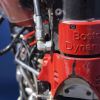 +14 +5
+14 +5Prelude to a Robot Uprising
Technology Begets Technology. I’ve been staring at this banner at the DARPA Robotics Challenge for what feels like a solid minute, trying to figure out what the hell it means...
-
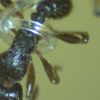 +2 +1
+2 +1Tiny Robotic Tentacles Can Lasso an Ant
With a diameter just twice that of a human hair, they look more like short snips of fishing line than advanced robotic appendages.
-
 +14 +3
+14 +3Global Hacking News: British scientists invent aircraft wings that can fix themselves in mid-flight
Breakthrough for 'self-healing technology'
-
 +5 +1
+5 +1Airbus developing reusable space rocket launcher
European aircraft and aerospace giant Airbus has unveiled plans for a reusable space rocket launcher that should be ready in 2025, one that will be radically different from the rival US firm Space X's concept.
-
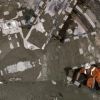 +10 +2
+10 +2Crossrail: The monster tunnelling under London streets
The huge machines carving out tunnels in London’s new railway – Crossrail – are approaching the end of their journey. Jon Excell hitched a ride.
-
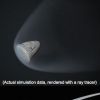 +14 +3
+14 +3Full scale simulation of SpaceX’s Mars Rocket Engine
Adam Lichtl, Steven Jones, GPU Technology Conference 2015 [Video]
-
 +17 +2
+17 +2The World's Longest (and Scariest) Glass Pedestrian Bridge
Haim Dotan didn't want to build a bridge. When two engineers approached the Israeli architect about designing a span across a 1,200-foot canyon in Zhangjiajie National Forest in China, his answer was a quick and resounding no. The land is known for its dramatic jagged rock formations and rich vegetation. If it looks like a scene out of Avatar, that’s because it is. The area, in the northwest part of Hunan province, was director James Cameron’s inspiration for the movie’s Halleluja Mountain.
-
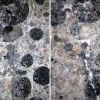 +2 +1
+2 +1Concrete buildings that heal themselves
Bacteria spores are part of a new concrete mix.
-
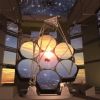 +13 +4
+13 +4Half a billion for BLOODY BIG telescope in Chile
Giant Magellan 'scope a 'venture into the unknown'.
-
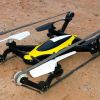 +3 +1
+3 +1B-Unstoppable Is The World's First Hybrid
Meet B-Unstoppable, the world's first hybrid tank-quadcopter.
-
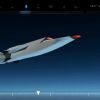 +2 +1
+2 +1Futurist Mag: US Air Force working on a new hypersonic air vehicle that can travel at speeds up to Mach 5 while carrying guidance systems and other materials.
-
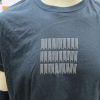 +1 +1
+1 +1Engineers win grant to make smart clothes for personalized cooling and heating
Imagine a fabric that will keep your body at a comfortable temperature -- regardless of how hot or cold it actually is. That's the goal of an engineering project at the University of California, San Diego, funded with a $2.6M grant from the US Department of Energy's Advanced Research Projects Agency -- Energy. Wearing this smart fabric could potentially reduce heating and air conditioning bills for buildings and homes.
-
 +18 +2
+18 +2The creation of the modern laptop
The world's first commercial laptop—though that is certainly stretching the term—was the Osborne 1. When released in 1981, it cost $1,795, weighed 10.7kg (23.5lbs), and ran an operating system called CP/M. The 1983 Compaq Portable, which ran MS-DOS, was even larger (13kg) and cost $3,590. Neither had a battery, though an aftermarket battery for the Osborne 1 lasted an hour.
-
 +15 +3
+15 +3Heavy metal: Life at the world's largest shipyard
How South Korea has become a global leader in shipbuilding.
-
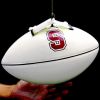 +15 +2
+15 +2Grippy not sticky: Stanford engineers debut an incredibly adhesive material that doesn't get stuck
A material inspired by the unique physics of geckos' fingertips could allow robotic hands to grip nearly any type of object without applying excessive pressure.
-
 +13 +3
+13 +3New Shape-Memory Metal Practically Never Wears Out
A new shape memory material stays strong even after tens of millions of transformations. It may finally pave way for widespread usage of the futuristic materials. In theory, shape-memory metals ought to be revolutionizing every corner of technology already, from the automotive industry to biotech. These futuristic metals—which can be bent and deformed but pop back to their original shape when heated or jolted with electricity—have already existed for decades.
Submit a link
Start a discussion




















